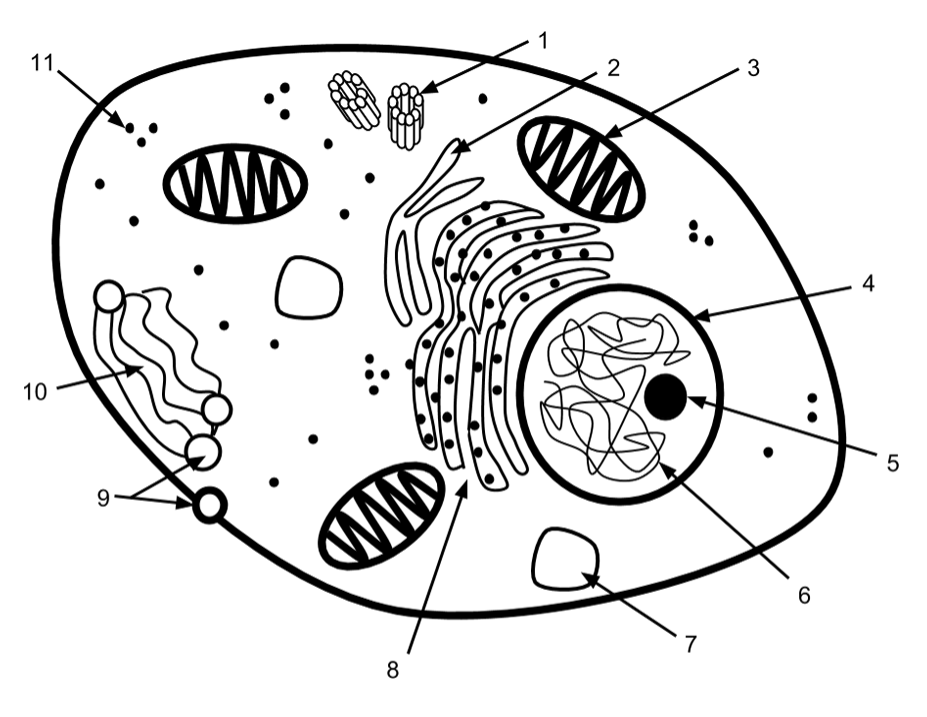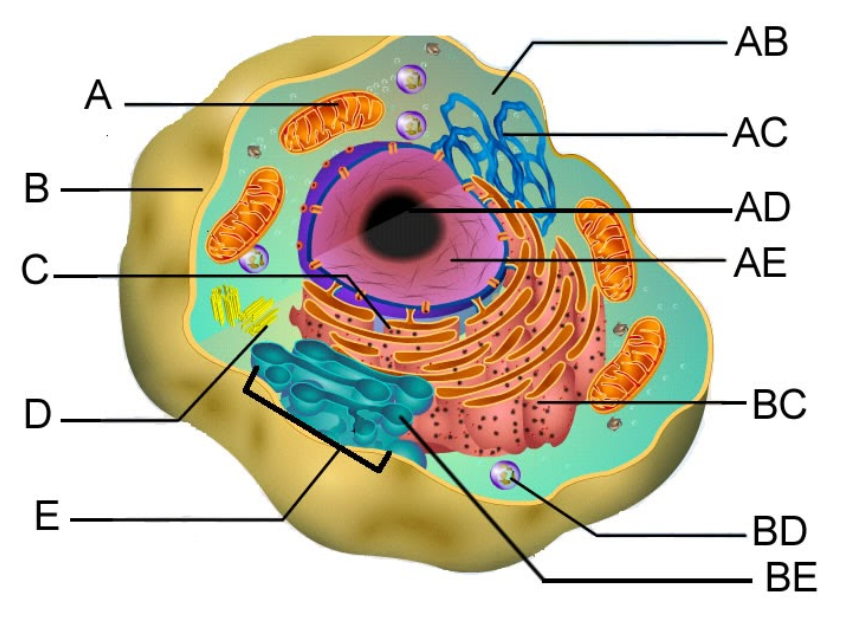Cell Labeling - Simple and Complex
This page is a draft and is under active development.
( \newcommand{\kernel}{\mathrm{null}\,}\)
Modeling is an important component of biology, and many of the illustrations you see in textbooks and online are simply representations of what we think cells look like. Scientists use microscopes to estimate the appearance of structures within the cell and then artists attempt to create an interesting visual of these structures. The end result is that there are hundreds of these types of illustrations that show cell parts, some are complex and three-dimensional, while others are more simple black and white diagrams. Compare these two illustrations of the eukaryotic cell:
Simple Cell

Complex Cell Illustration


